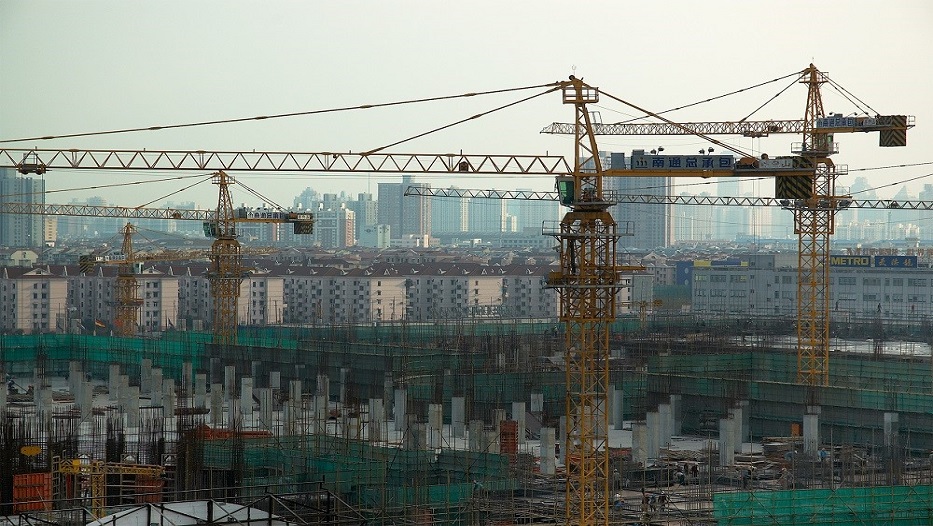admin | 20/01/2021
Zaida Ruiz, head of Construction and Assembly Underwriting at MAPFRE Global Risks, analyzes the situation and outlook of the infrastructure sector from the insurance standpoint after the crisis arising from the pandemic.
The construction industry
To provide a sense of this industry’s situation and its volume prior to the pandemic, in 2019, the 100 largest construction companies in the world brought in revenues of 1.462 trillion dollars, according to data presented in Deloitte’s Global Powers of Construction Report.
The economic and social crisis caused by COVID-19 has battered the markets, altering public spending projections and reducing action and investment capacity in almost all industries around the world, and construction is one of the most affected industries.
In Spain, the construction industry has been one of the pillars of the economy for decades. In fact, six Spanish companies were on the list of 100 construction companies with the most sales, totaling a turnover of 73.544 billion dollars as a whole. This figure represented 5% of the global industry’s total sales and positioned Spain among the countries with the largest market share, sharing fifth place with South Korea, behind China, Japan, the US, and France.
Moreover, the Deloitte report indicated that one of the most common strategic priorities among construction groups before the pandemic was international growth, and European construction companies were at the top of the list of those expanding most outside of their countries’ borders, followed by American companies. In this context, the growing international presence of Chinese companies was also notable.
A drastic change of scenario
The economic and social crisis caused by COVID-19 has battered the markets, altering public spending projections and reducing action and investment capacity in almost all industries around the world, and construction is one of the most affected industries.
In response to the drastic change to the global scenario, analysts and experts immediately began to revise their studies and projections to factor in the effects of the crisis.
In spite of the overall economic deceleration, there are a number of governments maintaining short-term infrastructure projects with a focus on recovery.
The changes were significant. While the construction industry accounted for 10% of Spain’s GDP in 2019 (124.049 billion, according to the industry’s employers’ organization Seopan), following the shutdown caused by the COVID-19 pandemic, the industry shrank back to 2012 levels.
The latest Global Data estimates indicated that the construction industry in the region will contract by 11.4% in 2020, in contrast with its previous forecast of 6.6%. It attributed the bleaker projection primarily to a slower-than-expected recovery of business in the year’s second.
In addition to the general shutdown caused by lockdown, overall economic uncertainty had an impact intentions to reactivate projects. Lockdown emptied out construction sites, but also shut down many public tenders and procurement processes.
The road to recovery: investment vs savings
In spite of the overall economic deceleration, there are a number of governments maintaining short-term infrastructure projects with a focus on recovery.
In Spain, at the “Building a Sustainable Future. Dialogs for Economic Recovery” forum held in October, the construction industry’s employers’ organization, Seopan, and Tecniberia, the Spanish Association of Engineering, Consultancy, and Technological Services Companies, presented an infrastructure investment plan valued at 145.573 billion euros that may be partly funded by the European Recovery Fund.
In Latin America, countries like Colombia, Brazil, Argentina, and Chile have announced plans and investments in infrastructure precisely with the intention of helping them exit the crisis.
Rail concessions were the first to be renewed early and this mechanism is now being implemented in other areas.
Analysts see the decline in public investment as an increase in opportunity for public-private partnerships. Some countries are considering regulatory changes to enhance participation in the private sector.
If, prior to the pandemic, the construction industry and infrastructure investment were essential factors of productivity for most economies, construction is now more than ever a fundamental tool to limiting the economic fallout.
The insurance market’s current response is essentially to adapt products to the situation of projects that were shut down and any subsequent delays they faced or are expected to face.
MAPFRE Global Risks, the support of the insurance industry
Before the COVID-19 pandemic broke out, the insurance industry was undergoing a significant change in trends. High loss ratios in addition to a gradual reduction of premiums had entailed stricter terms for the insurance industry so as to recover the balance previously lost. This tightening was aggravated by the lack of capacity available on the market when the line was shut down by several insurance and reinsurance companies.
The current situation the industry faces with the pandemic—which is playing out in slowed or fully halted infrastructure investment—may require larger premium decreases to achieve the balance mentioned previously.
Construction companies and other companies that use this kind of insurance were suffering the consequences of this market trend shift by taking on greater costs, self-insuring, or going without coverage at the worst possible times in their projects.
Now more than ever, the insurance industry needs to continue providing support and solutions to aid the recovery of the economic situation as quickly as possible, while not losing sight of the ultimate objective of ensuring the survival of the associated business lines.
Given its nature, the construction industry is subject to long-term cycles. MAPFRE believes it is of the utmost importance to take these cycles into account. Having a long-term vision for the associated products is therefore absolutely essential. This vision allows us to absorb the fluctuations that the sector undergoes so as to assist our clients during these difficult times.
The insurance market’s current response is essentially to adapt products to the situation of projects that were shut down and any subsequent delays they faced or are expected to face.
When we are able to recover, the sector will need new construction projects and insurance solutions. These solutions will have to be strongly tied to more demanding controls and improved risk management from the players involved (governments, financial institutions, engineering firms, contractors, etc.) All of this will need to be done with the ultimate objective of reducing the loss ratio and somehow mitigating the necessary premium increase that the products associated with the sector so urgently need.
Now more than ever, the insurance industry needs to continue providing support and solutions to aid the recovery of the economic situation as quickly as possible, while not losing sight of the ultimate objective of ensuring the survival of the associated business lines.

Zaida Ruiz
Head of Construction and Assembly Underwriting
MAPFRE Global Risks





